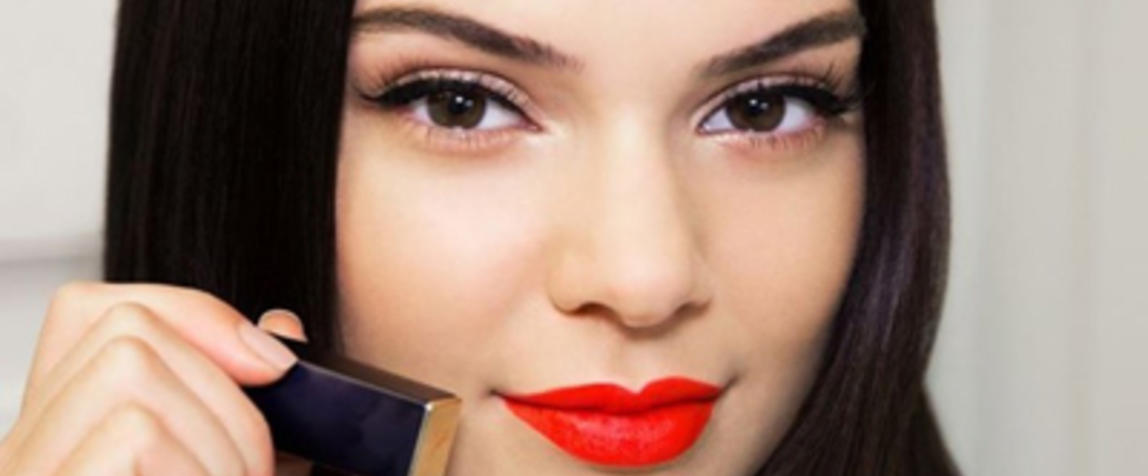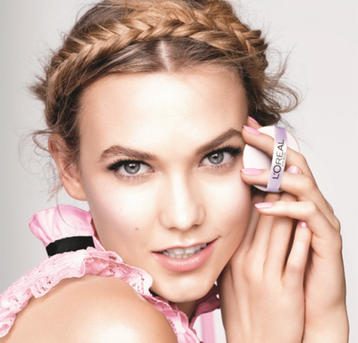e.l.f Cosmetics files for $US100 million IPO, top 10 digitally savvy haircare brands, record $US11.26 billion sales for Estée Lauder, and the anti-pollution trend - still more important in Asia.
e.l.f Cosmetics files for $US100 million IPO
Founded in 2004, e.l.f Cosmetics (eyes,lips,face) quickly became one of the fastest-growing beauty brands in the US. L'Oréal considered a buyout offer in 2013, but acquired Urban Decay instead. Less than a year later, private equity firm TPG Capital took a majority stake in the budget beauty powerhouse, paying between US$200 million and US$300 million according to analysts at the time.
Back in 2014, e.l.f enjoyed annual sales of around $US50 million. The company has almost quadrupled its revenues since then, bringing in US$96.8 million in the first six months of this year. Rumours bgan to surface in late 2015 that e.l.f had hired banks to facilitate an IPO before June. The timeline came and went. To cue in with its phenomenal half-year results, e.l.f has now filed for an IPO of up to $US100 million.
According to the filing: "We believe a paradigm shift has occurred in cosmetics: today's cosmetics consumer is increasingly connected and informed, and purchasing decisions are often influenced by social media and other online content". That's not just marketing hype. The company's beginnings as an e-commerce retailer created a strong digital presence from the start and quickly established e.l.f as an online beauty authority.
Top 10 digitally savvy haircare brands
L'Oréal and consistently top the rankings of L2's Digital Index for beauty. The New York-based think-tank also rates haircare brands for their digital chops. The three main criteria are: a strong commitment to advertising, linking third-party sellers to their brand sites and cherry-picking best-in-class methods from their beauty counterparts.
Multinationals rule. L'Oréal-owned brands fill four out of the five top positions. P&G and Estée Lauder both boast two brands in the top 10. Kao and Unilever have one each.
- L'Oreal Paris
- Garnier
- Bumble and bumble
- John Frieda
- Carol's Daughter
Record $US11.26 billion sales for Estée Lauder
Estée Lauder's growth has been spectacular over the past decade. Only two years ago, the multinational hit the magic $US10 billion in annual revenues. Net sales in the final quarter of fiscal 2016 jumped 5 per cent in contrast to the same period last year, lifting full-year sales to a record $US11.26 billion - a spike of 4 per cent on 2015.
All categories delivered growth with the exception of skincare, which slipped 3 per cent. There were bright spots, though. Origins achieved strong results as a natural brand which appeals strongly to Millennials. While continued to ride the prestige wave to record double-digit growth over the financial year.
Makeup was the hero performer, another category strongly buoyed by Millennials. Overall growth rose 8 per cent for the year, fueled by sturdy results from , and Smashbox. Fragrance and haircare sales also enjoyed healthy sales uplifts of 3 and 4 per cent, respectively.
President and CEO, Fabrizio Freda, expects an even better outcome for 2017, forecasting net sales growth to rise by 6 to 8 per cent. "In fiscal 2017, we will aggressively pursue new opportunities to enhance our leadership. We will continue to diversify our distribution toward the fastest growing channels, while further developing our mid-sized brands and the newest additions to our portfolio," he said.
The anti-pollution trend - still more important in Asia
There's a big difference between what people say and what they do. Very few women around the world would disagree with the statement - Do you think that the modern lifestyle and pollution is damaging your skin? Protection against the effects of pollution has been a back story in skincare for more than 20 years, but a flood of anti-pollution products has moved the concern to centre stage over the past year.
In major international studies, over 50 per cent of women in leading Western countries such as France, Germany, the UK and the US claim they are worried that a more polluted environment is accelerating the ageing process. Yet China is streets ahead of any other beauty market in actual sales of anti-pollution skincare. Beauty multinationals from Japan and Europe have stepped up to the plate to meet the Chinese demand for products that shield the skin from micro-particles that penetrate its barrier or speed up free radical damage. But even in China, the bulk of skincare sales remain focused on brightening and hydration.
Many beauty concerns are global, but others are very regional. In Europe, North America and Australia, products that promise to repair and strengthen the skin rate highly, followed by brightening and anti-ageing claims. Organic and eco-friendly benefits also play well.
UV protection is a major issue in Japan, followed by brightening and hydration. South American women look for superior cleansing and are also concerned about UV protection. Vitamin-fortified claims are popular and most Latin American markets have favoured naturally-based skincare for generations. In spite of the current K-Beauty boom, Korean women give the thumbs-up to natural ingredients and effectiveness.
Snippets from the wires
- Sydney's population will hit the five million mark by the end of the year and expansion has its price. Retail rental growth spiked 28.4 per cent in the second quarter of the year as low vacancy rates and the continued influx of international retailers drove demand for prime retail estate, particularly in the CBD. Strong tourism arrivals spurred the biggest increase in clothing footwear and accessories.
- Millennials are driving the natural beauty market worldwide. In the US, Carmex, that titan of lip products, is rolling out its first natural lip balm. Called Comfort Care, it contains colloidal oatmeal and cold-pressed cranberry oil. The range of flavours includes Mixed Berry, Watermelon Blast and Sugar Plum.
- By the end of the year, China will surpass the US as the world's single biggest retail market by a slight margin. Total sales of $US4.886 trillion, in contrast to the USA's $US4.823 trillion. The People's Republic became the world's largest retail e-commerce market last year - lifting to $US899.90 billion - a massive increase which accounted for nearly half (47 per cent) of global online retail sales. According to Emarketer, the Chinese e-commerce market is expected to rise to $US2.416 trillion over the next four years.
- Tiffany & Co is on track to open its first store in New Zealand. Located in the historic Australis House in Auckland, the luxury jeweller will open its doors in the first week of November.
- Japan has the oldest median age in the world. Many mutinationals in other markets are targeting Millennials, but the Japanese beauty industry is chasing the so-called silver dollar. Analysts estimate that the over-60s will account for more than 50 per cent of total Japanese beauty and personal care sales over the next five years. So-called Pre-Seniors have become a major driving force for Japanese beauty brands and new launches targeting the demographic have soared since 2014.






